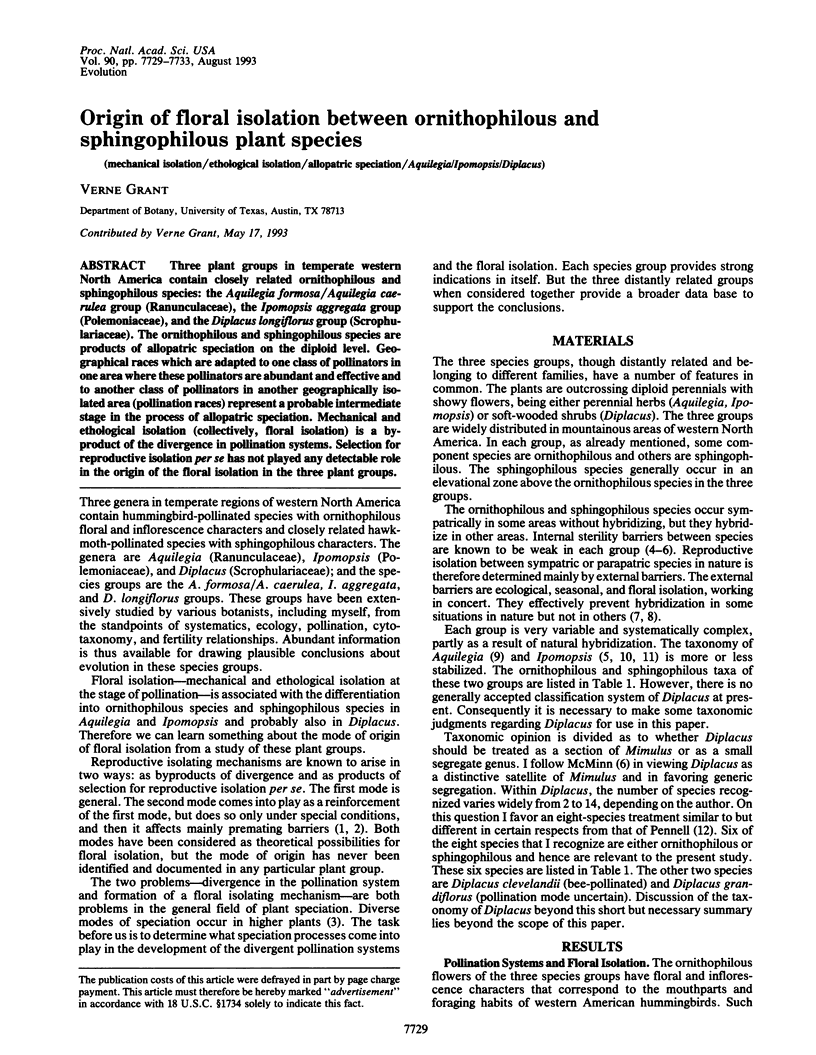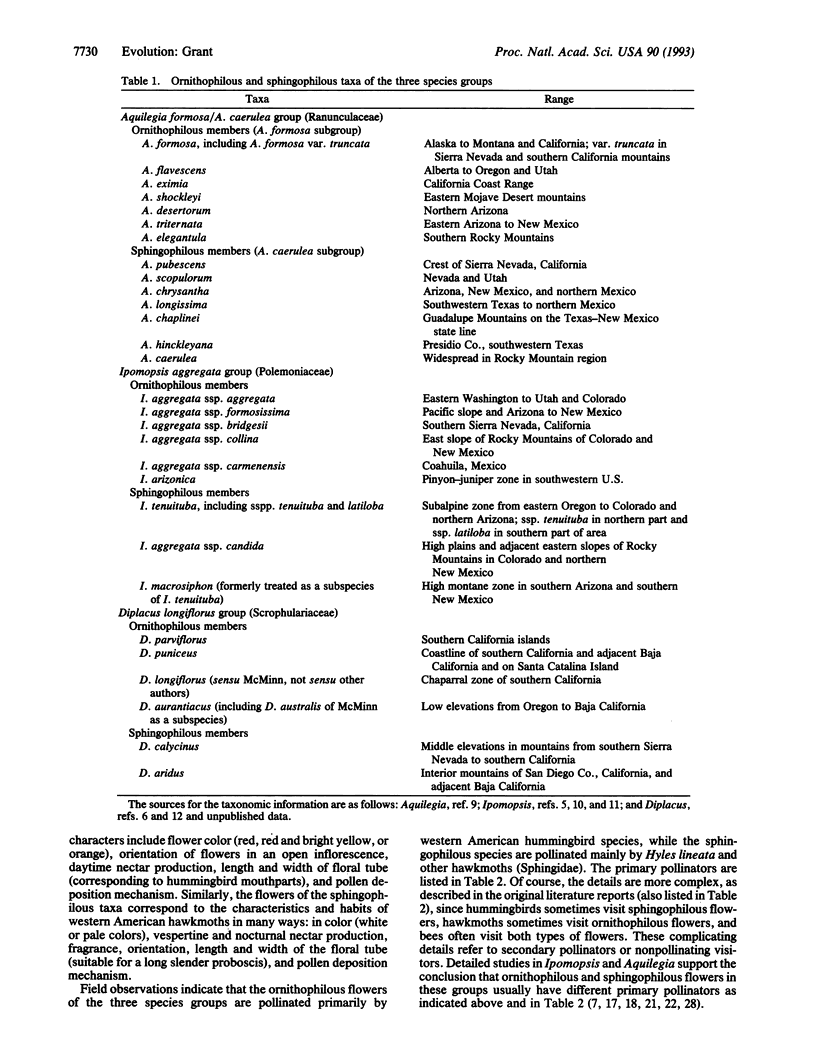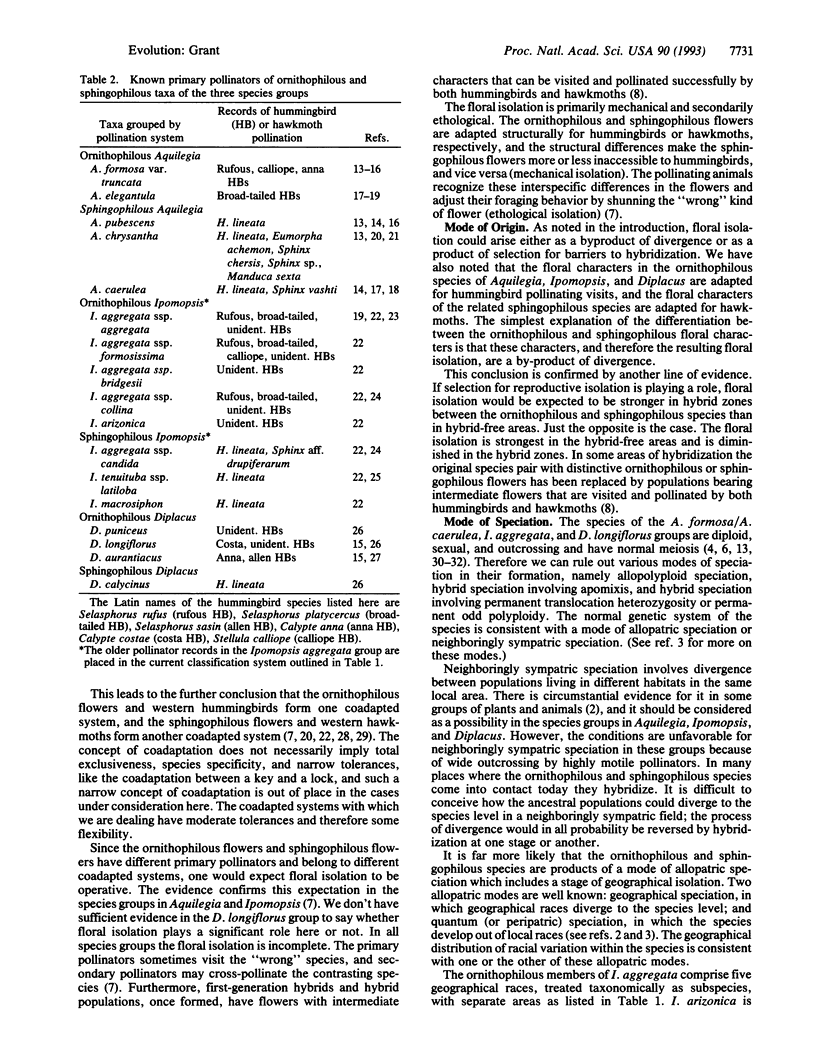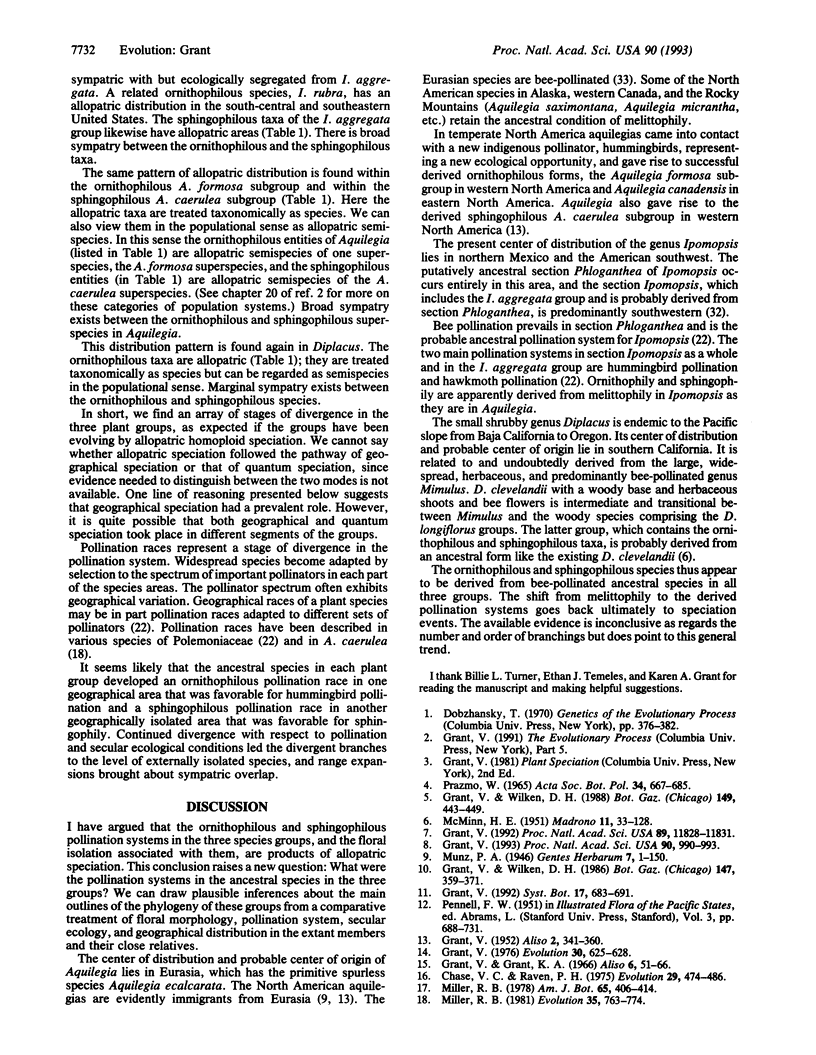Abstract
Three plant groups in temperate western North America contain closely related ornithophilous and sphingophilous species: the Aquilegia formosa/Aquilegia caerulea group (Ranunculaceae), the Ipomopsis aggregata group (Polemoniaceae), and the Diplacus longiflorus group (Scrophulariaceae). The ornithophilous and sphingophilous species are products of allopatric speciation on the diploid level. Geographical races which are adapted to one class of pollinators in one area where these pollinators are abundant and effective and to another class of pollinators in another geographically isolated area (pollination races) represent a probable intermediate stage in the process of allopatric speciation. Mechanical and ethological isolation (collectively, floral isolation) is a byproduct of the divergence in pollination systems. Selection for reproductive isolation per se has not played any detectable role in the origin of the floral isolation in the three plant groups.
Full text
PDF




Selected References
These references are in PubMed. This may not be the complete list of references from this article.
- Grant V. Effects of hybridization and selection on floral isolation. Proc Natl Acad Sci U S A. 1993 Feb 1;90(3):990–993. doi: 10.1073/pnas.90.3.990. [DOI] [PMC free article] [PubMed] [Google Scholar]
- Grant V., Temeles E. J. Foraging ability of rufous hummingbirds on hummingbird flowers and hawkmoth flowers. Proc Natl Acad Sci U S A. 1992 Oct 15;89(20):9400–9404. doi: 10.1073/pnas.89.20.9400. [DOI] [PMC free article] [PubMed] [Google Scholar]
- Levitt L. P., Barbour P. J., Castaldo J. E., Rae-Grant A. D. A private practice model for teaching and research activities. J Neurol Sci. 1991 May;103(1):105–108. doi: 10.1016/0022-510x(91)90292-f. [DOI] [PubMed] [Google Scholar]
- Paige K. N., Whitham T. G. Individual and population shifts in flower color by scarlet gilia: a mechanism for pollinator tracking. Science. 1985 Jan 18;227(4684):315–317. doi: 10.1126/science.227.4684.315. [DOI] [PubMed] [Google Scholar]


